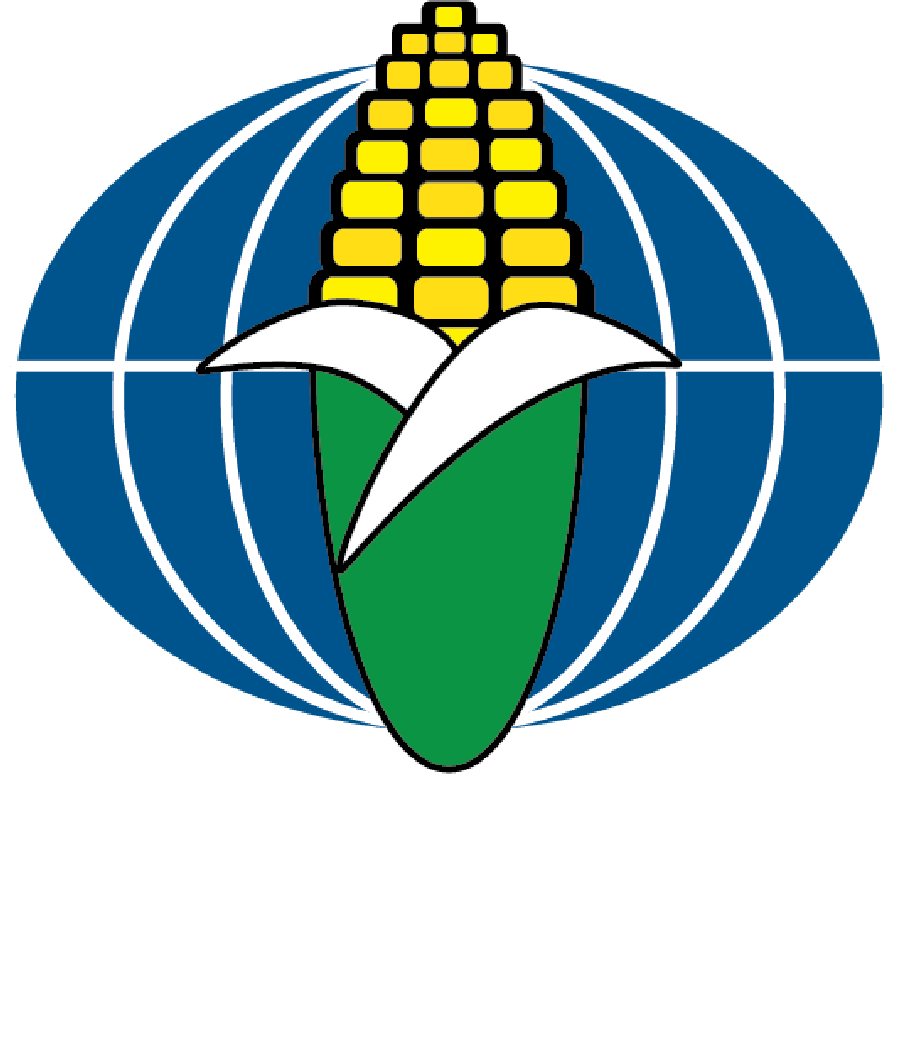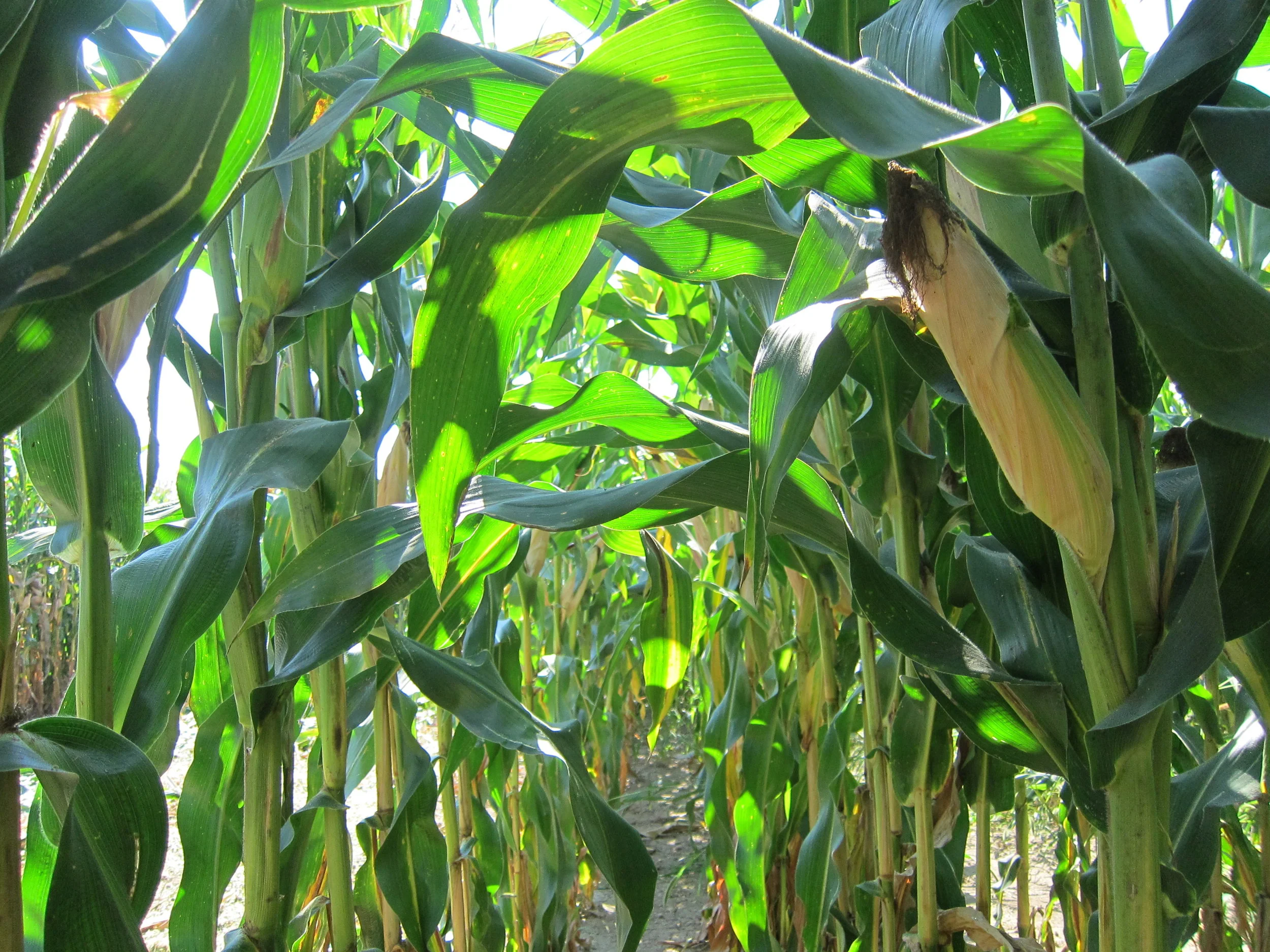Named after the Leafy gene that produces a distinctive plant with 8 or more leaves above the top ear, the advantages of growing and feeding a Leafy Corn Silage Hybrid begin with these extra leaves. But the benefits don’t end there.
leafy corn silage video
Strong Agronomics
Environment and management decisions have an impact on all crops, but Leafy Hybrids offers the grower some unique agronomic benefits in addition to the excellent agronomics that are required of any successful corn hybrid:
A Leafy has tremendous spring vigor and quickly produces a thick canopy. This reduces the amount of sunlight that reaches the ground for the competing weeds, even when the Leafy is planted at the recommended 28,000 to 30,000 plants per acre (70,000-75,000 pph).
A Leafy is more likely to flex than break in a foul weather event. Leafies have been bred to produce ears that are positioned relatively low on tall flexible stalks.
Leafies have been selected to resist ear molds that can be responsible for the mycotoxins that ruin feed.
high total plant yield
Leafy Corn Silage Hybrids are bred to produce a high yield of digestible fiber and starch. Leafy’s extra leaves above the ear increase the leaf area index of the plant, allowing for more sugar production. These sugars are converted to starch in the ear. Leafies have flex-type ears and the extra leaves of a Leafy help to develop and fill those ears with starch. Extra leaves also increase tonnage. A Leafy crop stands taller and fuller than non-Leafy hybrids that are planted in the same location. Leafy Corn Silage Hybrids must be planted at low populations of 28,000 - 30,000 plants per acre (70,000-75,000 pph) to realize their optimal yield, but because each plant produces more dry matter than a dual purpose hybrid, you can realize top yields with less seed.
long harvest window
Leafy Corn Silage Hybrids are bred to extend the ideal silage harvest window. They are selected for a slower and complimentary rate of drydown in both the plant and ear components. The whole plant stays near the ideal silage moisture level of 65% moisture and 50% kernel milkline for a longer period of time compared to dual purpose hybrids. Dairy producers are more likely to chop and store the best quality feed with this extended harvest window.
research: long harvest window
“Researchers at the University of Wisconsin compared a Leafy Corn Silage Hybrid to a dual purpose hybrid in a feed study. They found that “[a]lthough harvested at a similar kernel milkline positioning, the moisture content of LFY was higher than [the dual purpose] at both low and high plant populations.””
“Researchers from Agriculture and Agri-Food Canada conducted a four year study that compared two Leafy Corn Silage Hybrids to two dual purpose hybrids. They found that the Leafies had significantly higher kernel moisture than the dual-purpose hybrids in each of the four years as well as higher maximum kernel dry weight in 2 of the 4 years. They also found that the Leafies declined more slowly in kernel moisture content than the dual purpose hybrids with up to a 6 day difference in kernel moisture change between the two hybrid types.”
short storage period
Leafy Corn Silage Hybrids can be fed right after fermentation - after about 30 days in the silo. Leafies have been selected to produce large, flat, soft, moist kernels that have more floury starch inside. During silage chopping these kernels fracture easily into small particles which require less starch softening by the lactic acid in the silo before the starch is available for rumen digestion. A Leafy’s increased leaf area also has the capacity to convert more sunlight to sugars in the plant during photosynthesis, so their stalks contain more sugars for lactic acid formation in the silo. This shortened storage period allows dairy producers to reduce dry matter losses and storage space requirements.
research: plant sugars & ensiling
“Researchers at the University of Wisconsin compared a Leafy Corn Silage Hybrid to a dual purpose hybrid in a feed study. They found that “[s]ilage pH tended to be lower and lactate concentration higher for LFY than [the dual purpose], which was likely related to its higher moisture and sugar contents.””
“Researchers at the Hungarian Acadamy of Sciences found that the extra above ear leaves of a Leafy increase the sunlight-absorbing surface of the plant compared to dual purpose hybrids. “Prior to ensiling and before complete physiological maturity, there are still a large number of fresh leaves that contain greater quantities of sugar than those of normal hybrids.””
high fiber digestibility
Leafy Corn Silage Hybrids have four unique characteristics that boost their fiber digestibility:
They have a lower ear position on the stalk. The ear is the heaviest part of the plant, so the below-ear portion of the stalk must be heavily lignified to support its weight. By lowering the ear, the more digestible above-ear portion of the stalk is increased while maintaining an adequate below ear stalk for good standability.
Leafies that are grown at recommended populations have thicker, more digestible stalks since the proportion of soft inner stalk is increased relative to the lignified outer rind.
Leafies have two or more additional leaves above the ear and boast an excellent balance of effective and digestible fiber for the dairy ration, with no need to add straw!
Leafies have been bred to have stalks that softer and more digestible than the stalks of grain hybrids which must stand until a later maturity.
high starch content
Leafies are bred to have large, energy-rich flex ears. When planted at recommended population of 28,000-30,000 ppa (70,000-75,000 pph), a Leafy crop will realize its best starch yield.
high starch digestibility
Leafy Corn Silage Hybrids are bred to have ears with digestible kernels. Unlike grain varieties, a Leafy ear is composed of large, flat, soft kernels that dry down slowly on digestible cobs. The kernels have a higher proportion of floury white starch than the hard, vitreous yellow starch typical of grain kernels. These larger, wetter floury kernels break up easily into smaller pieces during harvest and during the cow’s chewing. Smaller starch particles increase the sites of digestion for rumen microbes as well as increase the rumen retention time for a boost in milk production.
Leafy Corn Silage Hybrids have a more floury kernel type than modern grain or dual purpose hybrids, which have a more vitreous kernel type.
research: starch digestibility
“Agriculture and Agri-Food Canada conducted a four year study that compared two Leafy Corn Silage Hybrids to two dual purpose hybrids. They used a TARR test and a Stenvert test to compare kernel hardness of the four hybrids over four years. They found that Leafy silage-specific kernels were “softer at silage harvest time and at maturity than the dual-purpose or non-Leafy silage hybrids,” and went on to conclude that “[t]he softer kernels in Leafy silage-specific hybrids indicate that under the same ensiling conditions, there would be more digestible energy produced from kernel starch than from non-Leafy dual-purpose hybrids.”
“A feed study at the W.H. Miner Agricultural Research Institute compared a dual purpose hybrid to a Leafy Corn Silage Hybrid. They found that the dual purpose hybrid had a higher proportion of grain (40.6%) than the Leafy (37%), but that the grain of the Leafy was more digestible. It had a higher in vitro true DM disappearance than the grain of the dual purpose hybrid and higher in vitro neutral detergent fiber digestibility (IVNDFD) before and after ensiling. Cows that were fed the Leafy ration produced higher quantities of milk, 3.5% FCM, milk CP and milk lactose compared with cows that were fed the dual purpose TMR.”
excellent feed quality
Leafy Corn Silage Hybrids make quality milk and help keep a herd healthy. A Leafy crop planted at recommended populations of 28,000-30,000 ppa (70,000-75,000 pph) should produce a feed with an appropriate balance of digestible fiber and digestible starch for milk production, while providing adequate effective fiber for healthy rumination and efficient rumen retention time.
research: milk studies
“Researchers at the University of Wisconsin compared a Leafy Corn Silage Hybrid to a dual purpose hybrid in a feed study. They found that “[t]otal-tract digestibility of dietary starch was higher for leafy compared with conventional corn hybrids.” This was possibly related to higher grain moisture content or softer kernel texture for LFY.” The researchers calculated that 86% of the starch from the dual purpose hybrid was digestible and that 93 % of the Leafy starch was digestible. They also found that “there was a trend for higher milk fat percentage for LFY compared to CH (conventional hybrid).””
“Researchers from the University of Wisconsin conducted a feed study comparing a dual purpose hybrid to a Leafy Corn Silage Hybrid. Despite the dual purpose having a higher quantity of starch (40.7%vs 38.8%), they found that: “[w]hen fed as silage, the leafy corn hybrid used in this experiment supported greater DMI as well as higher milk and milk protein yields when compared to the grain corn hybrid.” They also observed more 4% FCM. ”
ration type adaptability
Many dairies balance and feed multiple rations for cows that are at different stages of maturity and lactation. A Leafy Corn Silage Hybrid can form the basis of a ration that is fed to heifers, early lactation, late lactation, and dry cows.













